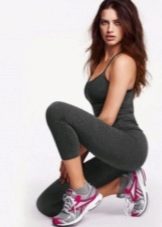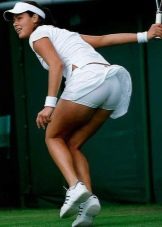Features of the types of soles in sneakers

The first sneakers appeared at the end of the nineteenth century and since then have gone through a long history. Now these are not just shoes with studs on the soles, but the real products of innovative technologies and developments for more comfortable sports.




Meaning
Nowadays, many sneaker models are a casual option and perfectly cope with their task of creating comfort during long walks. However, in the case of serious sports, it is best to purchase specialized shoes. It is of great importance, as many disciplines involve stress on the muscles of the legs and back, as well as the inability to practice barefoot. The right running shoes increase the performance and efficiency of your workouts, as well as reduce the likelihood of injury and the potential consequences of mistakes.




The sole of sneakers is of great importance, because it is on it that the main load falls. For each sport, different types of soles are preferable, depending on the specifics of the location of the training, the training program. Making the wrong choice not only minimizes the shoe's lifespan, but can also cause injury.




The sole of sports sneakers has a multi-layer structure, consisting of an intermediate center and an immediate outer part in contact with the surfaces of the ground or sports hall. Each part is different in composition and carries its own special functions.




The form
There are several types of sole shapes for sneakers. For starters, it is flat, ensuring full contact with the ground. Then the sole, which repeats the anatomy of the foot, and therefore has a small gap-groove between the toe and heel.On some sneakers, for example, on jazz sneakers, this depression is as close as possible to the foot, which is why the shoe has a rather unusual concave shape. And finally, a recent novelty, the sole for "passive" weight loss - semicircular and round, providing the necessary impact on the muscles of the legs and buttocks during normal walking.








Material
The main materials for the sole of the sneaker are rubber and polyurethane. Polyurethane is flexible, does not weigh very much, is wear-resistant, it has good thermal insulation and shock absorption, but it is better not to wear shoes with such a sole in winter and on ice due to poor adhesion to sliding surfaces. At very low temperatures, this material completely loses its elasticity, which can lead to damage to the shoe. There are several types of rubber, each of which has its own properties, but in general, this material is frost-resistant, non-slip, durable and resistant. Among the disadvantages are heavy weight, high cost and rapid surface contamination.




It is not only the outer part of the sole that matters, but also the inner, middle layer, as it provides cushioning. The most commonly used materials are silicone and silicone gel. Among their qualities are resistance to deformation and temperature changes. The main purpose of the midsole is to relieve pressureapplied to the legs during exercise. Less common materials are phylon, filayt, ethyl vinyl acetate.




Thickness
One or another sole thickness is preferable for your situation and sport. Some sneakers will have it as thick and wide as possible to provide traction, whether it's a gym floor or tarmac. Sometimes it is necessary that the shoes, on the contrary, be light and elastic, and for this the sole must be thin. Fashionable tractor, that is, embossed, sole has taken pride of place in sneakers for sports. The relief is minimal and frequent, or quite noticeable, deep, similar to blunt teeth.




What should be the sole depending on the sports?
For running in the gym on a treadmill or on flat, hard asphalt, soft, flat soles are fine. However, if you prefer to run on a dirt road and on the ground, where there is a high probability of bumping into sharp stones, glass, or stepping on tree roots, then a hard sole is preferable. In general, when running, priority is given to the lightness of the product. But footwear for sports walking has a stiff and grooved sole.




For activities on a dirt surface, such as football, sneakers with spiked soles are required. Basketball shoes should have good traction and a non-slip outsole. Tennis shoes have thin soles with shallow relief. In sneakers for fitness, gym, volleyball, mini-football, the sole should be elastic, but at the same time it should support the foot well. For dancing, it is better to choose shoes with split soles so as not to lose the plasticity of the foot.




Winter sports shoes deserve special attention., because it should not only not slide on the surface, but also not freeze, not lose its properties. To avoid falls, the sole must be tractor, and the deeper the terrain, the better grip will be provided.












